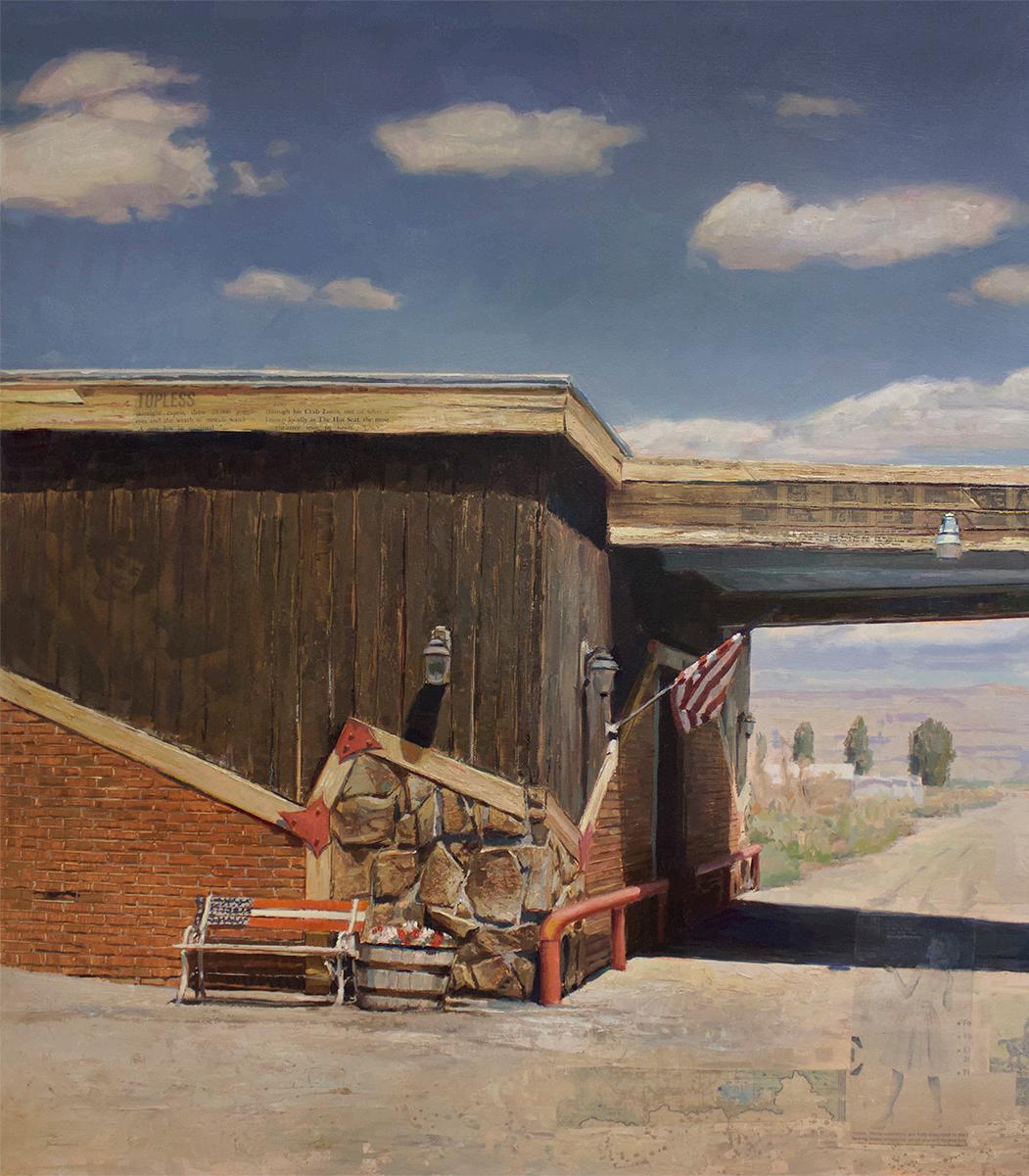
JASON KOWALSKI OLD GLORY


Jason Kowalski is one of today’s most visually perceptive and technically astute painters of America’s mid-20th century built landscape. But his talent is far more than just technical. His paintings possess an authentic sensitivity to the people and time of the places that are his subjects and, as a result, there is in his works an uncanny spirit that gives them a remarkable aura of life and vibrancy that seems transported directly from another era. Kowalski was recently awarded a prestigious Pollock-Krasner Foundation Grant in deference to his skills. Kowalski’s work goes well beyond mere painted documentation of his subject matter. As aesthetic reminiscences of historic roadside architecture and signage, these paint- ings certainly also engage aesthetic muniments. These exquisite works resonate, with unexpected and sensitive cultural nuance, the hopes and dreams — however faded and tattered— that once defined the glories of an American past. Though Kowalski was not yet born when most of what he paints was full of the lives and aspirations of the men and women who were themselves the heart of the American Heartland — when the “No Vacancy” signs of motels along Old Route 66 lit up and the Keg Saloon was jammed at night with revelry — somehow he captures in his paintings the spirit of what remains of the towers of that bulwark of an Americana now nearly gone, the soul of a vital time and the folk that lived in it. He does this with the intuition of a poet and evokes a connection with his subject in his light-infused and affectionate treatment of the tangible remnants of what otherwise is merely memory and story. Viewers of a certain age may instantly recognize motel signs.


In his paintings that clearly harken to America at the mid-century, when travel by car was a culture, and half the fun of arriving at a destination was in getting there, stopping at plenty of roadside attractions along the way. “Oftentimes, these things are in dilapidated states, rusting, and falling apart. There’s a beauty in that,” Kowalski aptly notes. Kowalski’s genius lies in his aesthetic ability to visually transform and elevate what might be perceived as dilapidation into a sense of proud resilience. His work somehow extracts the majesty that lies all but forgotten in these abandoned, decaying buildings and rusting cars and trucks, the marquis signs that could today seem the epitome of kitsch, all these relics of the past, and brings out hints of beauty that plainly remain in them, and relates it into a new and dignified reference for delectation in the present. The artist’s presentation of the purity of color and light in the structures and objects also bespeaks a kind of spiritual purity. Perhaps it derives from the nature of things then and perhaps now it is a reflection too of the artist’s lack of artifice in his intention in making these works. His technical skill is remarkable and is used by him to poetic effect to summon memory and nostalgia with his facility for meticulous detail the shabby and fading as well as the grand and majestic. Kowalski presents the aggregation of all of these elements with a signature use of diffused light, toned colors and reverential perspective in order to inspire consciousness of the time and places his work portrays. Ultimately, the works liminality hover between presence and dream.

Rambling Prospector, 2023, Oil & mixed media on panel 48 x 60 x 2 in.
American Classic, 2024, Oil & mixed media on panel, 18 x 24 in.

Welcome Travelers, 2024, Oil & mixed media on panel, 38 x 60 x 2 in.



Open Range, 2024, Oil & mixed media on panel, 27 x 36 x 2 in.



Railyard Retreat, 2024, Oil & mixed media on panel, 36 x 54 x 2 in.
Nightly Entertainment, 2021, Oil & mixed media on panel, 24 x 24 x 2 in.


Lucky Strike, 2024, Oil & mixed media on panel, 72 x 30 x 2.50 in.
Bohemian Dreams, 2024, Oil & mixed media on panel 44 x 27 x 2 in.





His paintings can serve an underlying purpose. They can make time stand still. These paintings preserve a part of what made these places beautiful, what wove them into the fabric of the American Dream. One of the great virtues of Kowalski’s approach to his subject is its ability to effect a transformation of the dreams of these places from what they once were to the reality of what they are now. His work is full of the current beauty they have and also the memories of what they once were. In the ability to express this synthesis, Kowalski achieves major success. Uniquely, these paintings bespeak a subtle sense of happiness, rare for works that endeavor to depict this genre of loss, allowing the viewer the freedom to imagine their own forebears, those who might have treasured their lives in these places, those who might have sought that great American Dream here. Kowalski shares this quiet joy with an open heart and a most talented brush.

